Pew! Pew! Pew!

Pew! Pew! Pew!
Imagine slow-motion fireworks that started exploding 170 years ago and are still continuing. This type of firework is not launched into Earth's atmosphere, but rather into space by a doomed super-massive star, called Eta Carinae.
Enjoy the the latest view from our Hubble Space Telescope.
Make sure to follow us on Tumblr for your regular dose of space: http://nasa.tumblr.com.
More Posts from Nasa and Others
How Do Space Telescopes Break Down Light?
Space telescopes like Hubble and our upcoming James Webb Space Telescope use light not only to create images, but can also break light down into individual colors (or wavelengths). Studying light this way can give us a lot of detail about the object that emitted that light. For example, studying the components of the light from exoplanets can tell us about its atmosphere’s color, chemical makeup, and temperature. How does this work?
Remember the primary colors you learned about in elementary school?
Those colors are known as the pigment or subtractive colors. Every other color is some combination of the primary colors: red, yellow, and blue.

Light also has its own primary colors, and they work in a similar way. These colors are known as additive or light colors.
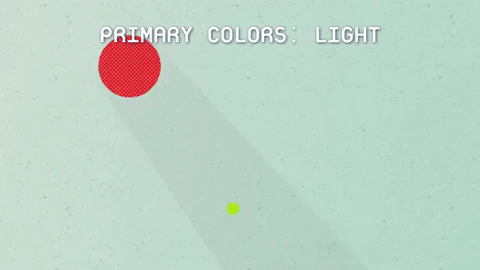
TVs make use of light’s colors to create the pictures we see. Each pixel of a TV screen contains some amount of red, green and blue light. The amount of each light determines the overall color of the pixel. So, each color on the TV comes from a combination of the primary colors of light: red, green and blue.

Space telescope images of celestial objects are also a combination of the colors of light.
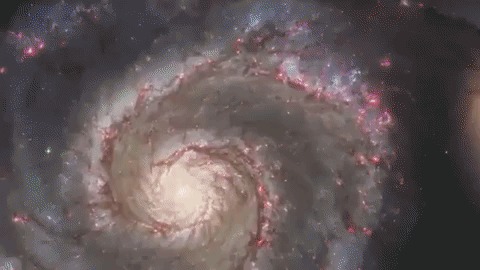
Every pixel that is collected can be broken down into its base colors. To learn even more, astronomers break the red, green and blue light down into even smaller sections called wavelengths.
This breakdown is called a spectrum.

With the right technology, every pixel of light can also be measured as a spectrum.

Images show us the big picture, while a spectrum reveals finer details. Astronomers use spectra to learn things like what molecules are in planet atmospheres and distant galaxies.
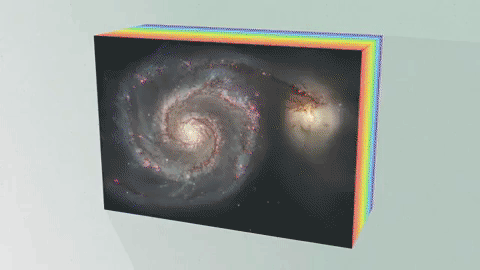
An Integral Field Unit, or IFU, is a special tool on the James Webb Space Telescope that captures images and spectra at the same time.
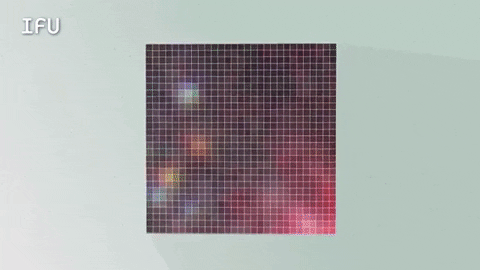
The IFU creates a unique spectrum for each pixel of the image the telescope is capturing, providing scientists with an enormous amount of valuable, detailed data. So, with an IFU we can get an image, many spectra and a better understanding of our universe.
Watch the full video where this method of learning about planetary atmospheres is explained:
The James Webb Space Telescope is our upcoming infrared space observatory, which will launch in 2021. It will spy the first galaxies that formed in the universe and shed light on how galaxies evolve, how stars and planetary systems are born and tell us about potentially habitable planets around other stars.
To learn more about NASA’s James Webb Space Telescope, visit the website, or follow the mission on Facebook, Twitter and Instagram.
Text and graphics credit: Space Telescope Science Institute
Make sure to follow us on Tumblr for your regular dose of space: http://nasa.tumblr.com.
5 Myths About Becoming an Astronaut
Editor’s Note: This post was updated on March 15, 2024, to reflect new URLs and updated qualifications for applicants.
Have you ever wondered if you have what it takes to become a NASA astronaut? The term “astronaut” derives from the Greek word meaning “star sailor.”
We’re looking for a new class of astronauts to join the NASA team, and if you’re thinking about applying, there are a few things you should know.
Here are a few myths about becoming an astronaut:
MYTH: All astronauts have piloting experience.
FACT: You don’t need to be a pilot to be an astronaut. Flying experience is not a requirement, but it could be beneficial to have.

MYTH: All astronauts have perfect vision.
FACT: It’s OK if you don’t have 20/20 vision. As of September 2007, corrective surgical procedures of the eye (PRK and LASIK), are now allowed, providing at least one year has passed since the date of the procedure with no permanent adverse aftereffects.

MYTH: All astronauts have advanced degrees, like a PhD.
FACT: While a master’s degree from an accredited university is typically necessary to become an astronaut, an exception exists if you have completed a medical degree or test pilot school.

MYTH: Astronauts are required to have military experience to be selected.
FACT: Military experience is not required to become an astronaut.

MYTH: You must be a certain age to be an astronaut.
FACT: There are no age restrictions. Astronaut candidates selected in the past have ranged between the ages of 26 and 46, with the average age being 34.

OK, but what are the requirements?

Basic Qualification Requirements
Applicants must meet the following minimum requirements before submitting an application:
Be a U.S. citizen.
Have completed a master’s degree (or foreign equivalent) in an accredited college or university with major study in an appropriate technical field of engineering, biological science, physical science, computer science, or mathematics.
The master’s degree requirement can also be met by having:
Completed at least two years (36 semester hours or 54 quarter hours) in an accredited PhD or related doctoral degree program (or foreign equivalent) with major study in an appropriate technical field of engineering, biological science, physical science, computer science, or mathematics.
Completed a Doctor of Medicine, Doctor of Osteopathic Medicine, or related medical degree (or foreign equivalent) in an accredited college or university.
Completed or be currently enrolled in a Test Pilot School (TPS) program (nationally or internationally recognized) and will have completed this program by June 2025. (Must submit proof of completion or enrollment.)
If TPS is your only advanced technical degree, you must have also completed a bachelor’s degree or higher (or foreign equivalent) at an accredited college or university with major study in an appropriate technical field of engineering, biological science, physical science, computer science, or mathematics.
Have at least three years of related professional experience obtained after degree completion (or 1,000 Pilot-in-Command hours with at least 850 of those hours in high-performance jet aircraft for pilots). For medical doctors, time in residency can count toward experience and must be completed by June 2025.
Be able to pass the NASA long-duration flight astronaut physical.
Applications for our next astronaut class are open through April 2! Learn more about our Astronaut Selection Program and check out current NASA astronaut Anne McClain’s advice in “An Astronaut’s Guide to Applying to Be an Astronaut.”
Make sure to follow us on Tumblr for your regular dose of space!
Keep reading
The Daredevil Spacecraft That Will Touch the Sun
In the summer of 2018, we’re launching Parker Solar Probe, a spacecraft that will get closer to the Sun than any other in human history.

Parker Solar Probe will fly directly through the Sun’s atmosphere, called the corona. Getting better measurements of this region is key to understanding our Sun. For instance, the Sun releases a constant outflow of solar material, called the solar wind. We think the corona is where this solar wind is accelerated out into the solar system, and Parker Solar Probe’s measurements should help us pinpoint how that happens.

The solar wind, along with other changing conditions on the Sun and in space, can affect Earth and are collectively known as space weather. Space weather can trigger auroras, create problems with satellites, cause power outages (in extreme cases), and disrupt our communications signals. That’s because space weather interacts with Earth’s upper atmosphere, where signals like radio and GPS travel from place to place.

Parker Solar Probe is named after pioneering physicist Gene Parker. In the 1950s, Parker proposed a number of concepts about how stars — including our Sun — give off energy. He called this cascade of energy the solar wind. Parker also theorized an explanation for the superheated solar atmosphere, the corona, which is hotter than the surface of the Sun itself.

Getting the answers to our questions about the solar wind and the Sun’s energetic particles is only possible by sending a probe right into the furnace of the Sun’s corona, where the spacecraft can reach 2,500 degrees Fahrenheit. Parker Solar Probe and its four suites of instruments – studying magnetic and electric fields, energetic particles, and the solar wind – will be protected from the Sun’s enormous heat by a 4.5-inch-thick carbon-composite heat shield.
Over the course of its seven-year mission, Parker Solar Probe will make two dozen close approaches to the Sun, continuously breaking its own records and sending back unprecedented science data.

Getting close to the Sun is harder than you might think, since the inertia of a spacecraft launched from Earth will naturally carry it in repeated orbits on roughly the same path. To nudge the orbit closer to the Sun on successive trips, Parker Solar Probe will use Venus’ gravity.
This is a technique called a gravity assist, and it’s been used by Voyager, Cassini, and OSIRIS-REx, among other missions. Though most missions use gravity assists to speed up, Parker Solar Probe is using Venus’ gravity to slow down. This will let the spacecraft fall deeper into the Sun’s gravity and get closer to our star than any other spacecraft in human history.

Get a behind-the-scenes view of the Parker Solar Probe under construction in a clean room on the NASA Sun Science Facebook page.

Keep up with all the latest on Parker Solar Probe at nasa.gov/solarprobe or on Twitter @NASASun.
Make sure to follow us on Tumblr for your regular dose of space: http://nasa.tumblr.com.
What Would NASA Imagery Experts Pack for the Moon?

We are one step closer to landing the first woman and the next man on the Moon, and we want to know: What would you take with you to the Moon? 🌙
We are getting ready for our Green Run Hot Fire test, which will fire all four engines of the rocket that will be used for the Artemis I mission. This test will ensure the Space Launch System — the most powerful rocket ever built — is ready for the first and future missions beyond Earth’s orbit to the Moon.
In celebration of this important milestone, we’ve been asking you — yes, you! — to tell us what you would pack for the Moon with the hashtag #NASAMoonKit!
To provide a little inspiration, here are some examples of what NASA imagery experts would put in their Moon kits:

“The first thing that went into my #NASAMoonKit was my camera. Some of the most iconic photographs ever taken were captured on the surface of the Moon by NASA astronauts. The camera has to go. The hat and sunscreen will be a must to protect me from the unfiltered sunlight. Warm socks? Of course, my feet are always cold. A little “Moon Music” and a photo of Holly, the best dog in the world, will pass the time during breaks. Lastly, I need to eat. Water and gummy peach rings will go in a small corner of my pack.”
— Marv Smith, Lead Photographer, NASA Glenn Research Center

“I may not always pack light, but I tried to only pack the essentials — with a couple of goodies. I get cold fairly easily hence the blanket, extra NASA shirt, hat and gloves. No trip is complete without my favorite snack of almonds, water, sunglasses, lip balm, phone, and my headphones to listen to some music. I figured I could bring my yoga mat, because who wouldn’t want to do yoga on the Moon? The most important part of this kit is my camera! I brought a couple of different lenses for a variety of options, along with a sports action camera, notebook and computer for editing. The Van Gogh doll was just for fun!”
— Jordan Salkin, Scientific Imaging, NASA Glenn Research Center

“The first thing I thought of for my #NASAMoonKit was the first book I ever read when I was learning to read. It is about going on a journey to the Moon. I really liked that book and read it many times, looking at the illustrations and wondering about if I would ever actually go to the Moon. Of the many belongings that I have lost through the years from moving, that book has stayed with me and so it would, of course, go to the Moon with me. A family photo was second to get packed since we always had photos taken and volumes of old family photos in the house. Photography has played an important role in my life so my camera gear is third to get packed. As a kid I spent a lot of time and money building rockets and flying them. I bet my rocket would go very high on the Moon. I also like a little candy wherever I go.”
— Quentin Schwinn, Scientific Imaging, NASA Glenn Research Center

“I couldn’t go to the moon without my two mirrorless digital SLR cameras, lenses, my 120 6x4.5 film camera, several rolls of 120 film, my singing bowl (for meditation), my wireless printer, my son’s astronaut toy, several pictures of both my sons and wife, my oldest son’s first shoes (they are good luck), cell phone (for music and extra photos), tablet and pen (for editing and books), my laptop, and my water bottle (I take it everywhere).”
— Jef Janis, Photographer, NASA Glenn Research Center

“I’m taking my NASA coffee mug because let’s be honest; nothing is getting done on the moon until I’ve had my morning coffee out of my favorite mug. I’m taking two cameras: the 360-degree camera and the vintage range finder camera my father bought during the Korean War when he was a Captain and Base Doctor in the Air Force. I’m also taking my awesome camera socks so I can be a fashion embarrassment to my family in space as well as on Earth. The lucky rabbit is named Dez — for years I have carried her all over the world in my pocket whenever I needed a little good luck on a photo shoot. She’s come along to photograph hurricanes, presidents, and sports championships. Being from New Orleans, I would love to be the first to carry out a Mardi Gras tradition on the moon, flinging doubloons and beads to my fellow astronauts (especially if we are up there during Carnival season). I also want to take a picture of this picture on the moon so my wife and son know they are with me no matter where I go. Lastly, it’s a well-known fact that space travelers should always bring a towel on their journey.”
— Michael DeMocker, photographer, videographer & UAS, Michoud Assembly Facility

“I couldn’t go to the Moon without my camera, a 45-rpm vinyl record (My husband’s band — I really want to know how a record sounds in space. Gravity is what makes the needle lay on the record so will the change in gravity make it sound different?), a book to read, a photograph of my daughter, my phone or rather my communication and photo editing device, a snack, and I definitely couldn’t go to the Moon without my moon boots!”
— Bridget Caswell, Photographer, NASA Glenn Research Center
What's a Question you wish someone would ask?
10 Out of this World NASA Spinoff Technologies
What is a spinoff? Great question! A NASA spinoff is a technology, originally developed to meet our mission needs that has been transferred to the public and now provides benefits as a commercial product or service. Basically, we create awesome stuff and then share it with the world. Here’s a list of just a few NASA spinoff technologies (in no particular order):
1. Enriched Baby Food

While developing life support for Mars missions, NASA-funded researchers discovered a natural source for an omega-3 fatty acid that plays a key role in infant development. The ingredient has since been infused in more than 99% of infant formula on the market and is helping babies worldwide develop healthy brains, eyes and hearts.
2. Digital Camera Sensors
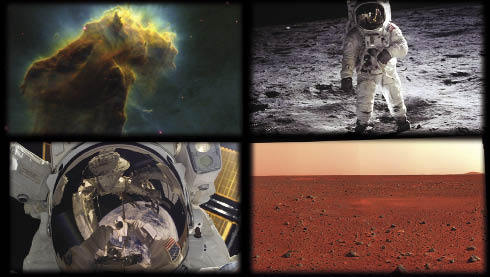
Whether you take pictures and videos with a DSLR camera, phone or even a GoPro, you’re using NASA technology. The CMOS active pixel sensor in most digital image-capturing devices was invented when we needed to miniaturize cameras for interplanetary missions.
3. Airplane Wing Designs

Did you know that we’re with you when you fly? Key aerodynamic advances made by our researchers - such as the up-turned ends of wings, called “winglets” - are ubiquitous among modern aircraft and have saved many billions of dollars in fuel costs.
4. Precision GPS

Uncorrected GPS data can be off by as much as 15 meters thanks to data errors, drift in satellite clocks and interference from Earth’s atmosphere. One of our software packages developed in the 1990s dials in these locations to within centimeters, enabling highly accurate GPS readings anywhere on the planet. One of our most important contributions to modern society, precise GPS is used in everything from personal devices and commercial airplanes to self-driving tractors.
5. Memory Foam

Possibly the most widely recognized spinoff, memory foam was invented by our researchers looking for ways to keep its test pilots and astronauts comfortable as they experienced extreme acceleration. Today, memory foam cushions beds, chairs, couches, car and motorcycle seats, shoes and even football helmets.
6. International Search and Rescue System

We pioneered the technology now used internationally for search and rescue operations. When pilots, sailors or other travelers and adventurers are stranded, they can activate a personal locator bacon that uses overhead satellites to relay their call for help and precise location to authorities.
7. Improvements to Truck Aerodynamics

Nearly every truck on the road has been shaped by NASA - literally. Agency research in vehicle aerodynamic design led to the curves and contours that help modern big rigs cut through the air with less drag. Our contributions to truck design have greatly reduced fuel consumption, perhaps by as much as 6,800 gallons per year for an average vehicle.
8. Shock Absorbers for Buildings and Bridges

Shock absorbers originally designed to survive the extreme conditions of space shuttle launches are now bracing hundreds of buildings and bridges in earthquake-prone regions all over the world. None of which have suffered even minor damage during an earthquake.
9. Advanced Water Filtration

We have recently discovered sources of water on the moon and Mars, but even so space is still practically a desert for human explorers, and every drop possible must be recycled and reused. A nanofiber filer devised to purify water in orbit is currently at work on Earth. From devices that supply water to remote villages, to a water bottle that lets hikers and adventurers stay hydrated using streams and lakes, our technology is being utilized.
10. Invisible Braces

A company working with NASA invented the translucent ceramic that became the first invisible dental braces, which would go on to become one of the best-selling orthodontic products of all time.
So, now that you know a few of the spinoff technologies that we helped develop, you can look for them throughout your day. Visit our page to learn about more spinoff technologies: https://spinoff.nasa.gov
Make sure to follow us on Tumblr for your regular dose of space: http://nasa.tumblr.com
What’s Up for July 2016?

What's Up for July? Use Saturn as your guide to a tour of the summer Milky Way.

Saturn continues to dazzle this month. Its wide rings and golden color provide a nice contrast to nearby Mars and Antares. Below Saturn lies the constellation Scorpius, which really does look like a scorpion!

Through binoculars or telescopes you'll be able to spot two pretty star clusters: a compact (or globular) cluster, M-4, and an open cluster, M-7. M-7 is known as Ptolemy's cluster. It was observed and cataloged by Greek-Egyptian astronomer Ptolemy in the first century.

Climbing north, you'll be able to spot the teapot shape which forms part of the constellation Sagittarius. The center of the Milky Way is easy to see. It looks like bright steam rising from the teapot's spout.

With difficulty, a good star chart and a medium-sized telescope you can locate faint Pluto in the "teaspoon" adjacent to the teapot.

A binocular tour of this center core of the Milky Way reveals many beautiful summer sky objects. We first encounter the Eagle Nebula, M-16. Part of this nebula is featured in the famous and beautiful "Pillars of Creation" images taken by our Hubble Space Telescope.

You'll have to stay up later to see the northern Milky Way constellations, which are better placed for viewing later in the summer and fall. Cygnus the swan features the prettiest supernova remnant in the entire sky, the Veil Nebula. It's too big to fit in one eyepiece view, but luckily there are three sections of it.

Look between Aquila and Cygnus to find three tiny constellations: Delphinus the dolphin, Vulpecula the fox and Lyra the lyre (or harp). M-57, the Ring Nebula, is the remains from a shell of ionized gas expelled by a red giant star into the surrounding interstellar medium. It's pretty, too! Look in Vulpecula for the Dumbbell, another planetary nebula.

We'll end our summer tour with Lacerta the lizard and Draco the Dragon. Lacerta is home to a star with an extrasolar planet in its orbit, and Draco, facing away from the center of our Milky Way, is a treasure trove of distant galaxies to catch in your telescope.
Watch the full What’s Up for July 2016 video HERE.
You can catch up on current missions and space telescopes studying our Milky Way and beyond at www.nasa.gov.
Make sure to follow us on Tumblr for your regular dose of space: http://nasa.tumblr.com
Hi Jeanette, what will you be doing while aboard the ISS next year? Will you be researching anything interesting? I'm a recent mathematics/astrophysics grad and I'm really curious about what goes on in the ISS :)
Aboard the ISS all crewmembers are research subjects in and of themselves, so we will learn how human beings can live longer and longer in microgravity. We will also maintain the space station which is a huge experiment in and of itself. Then there will be experiments in material science, biotech experiments, as well as plant science.
Stars Make Firework Supplies!
The next time you see fireworks, take a moment to celebrate the cosmic pyrotechnics that made them possible. From the oxygen and potassium that help fireworks burn to the aluminum that makes sparklers sparkle, most of the elements in the universe wouldn’t be here without stars.
From the time the universe was only a few minutes old until it was about 400 million years old, the cosmos was made of just hydrogen, helium and a teensy bit of lithium. It took some stellar activity to produce the rest of the elements!

Stars are element factories
Even after more than 13 billion years, the hydrogen and helium that formed soon after the big bang still make up over 90 percent of the atoms in the cosmos. Most of the other elements come from stars.

Stars began popping into the universe about 400 million years after the big bang. That sounds like a long time, but it’s only about 3% of the universe’s current age!
Our Nancy Grace Roman Space Telescope will study the universe’s early days to help us learn more about how we went from a hot, soupy sea of atoms to the bigger cosmic structures we see today. We know hydrogen and helium atoms gravitated together to form stars, where atoms could fuse together to make new elements, but we're not sure when it began happening. Roman will help us find out.

The central parts of atoms, called nuclei, are super antisocial – it takes a lot of heat and pressure to force them close together. Strong gravity in the fiery cores of the first stars provided just the right conditions for hydrogen and helium atoms to combine to form more elements and generate energy. The same process continues today in stars like our Sun and provides some special firework supplies.
Carbon makes fireworks explode, helps launch them into the sky, and is even an ingredient in the “black snakes” that seem to grow out of tiny pellets. Fireworks glow pink with help from the element lithium. Both of these elements are created by average, Sun-like stars as they cycle from normal stars to red giants to white dwarfs.
Eventually stars release their elements into the cosmos, where they can be recycled into later generations of stars and planets. Sometimes they encounter cosmic rays, which are nuclei that have been boosted to high speed by the most energetic events in the universe. When cosmic rays collide with atoms, the impact can break them apart, forming simpler elements. That’s how we get boron, which can make fireworks green, and beryllium, which can make them silver or white!

Since massive stars have even stronger gravity in their cores, they can fuse more elements – all the way up to iron. (The process stops there because instead of producing energy, fusing iron is so hard to do that it uses up energy.)
That means the sodium that makes fireworks yellow, the aluminum that produces silver sparks (like in sparklers), and even the oxygen that helps fireworks ignite were all first made in stars, too! A lot of these more complex elements that we take for granted are actually pretty rare throughout the cosmos, adding up to less than 10 percent of the atoms in the universe combined!
Fusion in stars only got us through iron on the periodic table, so where do the rest of our elements come from? It’s what happens next in massive stars that produces some of the even more exotic elements.

Dying stars make elements too!
Once a star many times the Sun’s mass burns through its fuel, gravity is no longer held in check, and its core collapses under its own weight. There, atoms are crushed extremely close together – and they don’t like that! Eventually it reaches a breaking point and the star explodes as a brilliant supernova. Talk about fireworks! These exploding stars make elements like copper, which makes fireworks blue, and zinc, which creates a smoky effect.
Something similar can happen when a white dwarf star – the small, dense core left behind after a Sun-like star runs out of fuel – steals material from a neighboring star. These white dwarfs can explode as supernovae too, spewing elements like the calcium that makes fireworks orange into the cosmos.

When stars collide
White dwarfs aren’t the only “dead” stars that can shower their surroundings with new elements. Stars that are too massive to leave behind white dwarfs but not massive enough to create black holes end up as neutron stars.
If two of these extremely dense stellar skeletons collide, they can produce all kinds of elements, including the barium that makes fireworks bright green and the antimony that creates a glitter effect. Reading this on a phone or computer? You can thank crashing dead stars for some of the metals that make up your device, too!

As for most of the remaining elements we know of, we've only seen them in labs on Earth so far.
Sounds like we’ve got it all figured out, right? But there are still lots of open questions. Our Roman Space Telescope will help us learn more about how elements were created and distributed throughout galaxies. That’s important because the right materials had to come together to form the air we breathe, our bodies, the planet we live on, and yes – even fireworks!
So when you’re watching fireworks, think about their cosmic origins!
Learn more about the Roman Space Telescope at: https://roman.gsfc.nasa.gov/
Make sure to follow us on Tumblr for your regular dose of space: http://nasa.tumblr.com

Go green — in space!
Good things come in mini-fridge-sized packages. This small spacecraft is our Green Propellant Infusion Mission and will test a low toxicity propellant. This technology could lengthen mission durations by using less propellant.
Make sure to follow us on Tumblr for your regular dose of space: http://nasa.tumblr.com.
-
 hopefuldreamers-world reblogged this · 1 year ago
hopefuldreamers-world reblogged this · 1 year ago -
 hopefuldreamers-world liked this · 1 year ago
hopefuldreamers-world liked this · 1 year ago -
 shibushiuniverse liked this · 2 years ago
shibushiuniverse liked this · 2 years ago -
 lovingeducationsunrisefreak liked this · 2 years ago
lovingeducationsunrisefreak liked this · 2 years ago -
 joliee-petite liked this · 3 years ago
joliee-petite liked this · 3 years ago -
 sleepymr liked this · 3 years ago
sleepymr liked this · 3 years ago -
 kaekingston liked this · 3 years ago
kaekingston liked this · 3 years ago -
 r-dical liked this · 4 years ago
r-dical liked this · 4 years ago -
 lapusia liked this · 4 years ago
lapusia liked this · 4 years ago -
 miisbee liked this · 4 years ago
miisbee liked this · 4 years ago -
 ishtarsdagger reblogged this · 4 years ago
ishtarsdagger reblogged this · 4 years ago -
 mileyflzliam reblogged this · 4 years ago
mileyflzliam reblogged this · 4 years ago -
 emgosnell reblogged this · 4 years ago
emgosnell reblogged this · 4 years ago -
 complementaryxcolors liked this · 4 years ago
complementaryxcolors liked this · 4 years ago -
 spicy-salmon-julien liked this · 4 years ago
spicy-salmon-julien liked this · 4 years ago -
 gonetomoreno liked this · 4 years ago
gonetomoreno liked this · 4 years ago -
 wachsurfer2018 liked this · 4 years ago
wachsurfer2018 liked this · 4 years ago -
 sonofelicediprofessione reblogged this · 5 years ago
sonofelicediprofessione reblogged this · 5 years ago -
 sonofelicediprofessione liked this · 5 years ago
sonofelicediprofessione liked this · 5 years ago -
 hironojp liked this · 5 years ago
hironojp liked this · 5 years ago -
 lexi-late liked this · 5 years ago
lexi-late liked this · 5 years ago -
 megacosms reblogged this · 5 years ago
megacosms reblogged this · 5 years ago -
 straworriez reblogged this · 5 years ago
straworriez reblogged this · 5 years ago -
 tiffanylleto reblogged this · 5 years ago
tiffanylleto reblogged this · 5 years ago -
 moss--moss liked this · 5 years ago
moss--moss liked this · 5 years ago -
 4mockingjay liked this · 5 years ago
4mockingjay liked this · 5 years ago -
 m-faith liked this · 5 years ago
m-faith liked this · 5 years ago -
 the-dreamward liked this · 5 years ago
the-dreamward liked this · 5 years ago -
 rebel-girl-queen-of-my-world liked this · 5 years ago
rebel-girl-queen-of-my-world liked this · 5 years ago -
 schoolnerd3006 liked this · 5 years ago
schoolnerd3006 liked this · 5 years ago -
 katilia4 liked this · 5 years ago
katilia4 liked this · 5 years ago -
 willawitch liked this · 5 years ago
willawitch liked this · 5 years ago -
 abby7598 reblogged this · 5 years ago
abby7598 reblogged this · 5 years ago -
 agentlogancatt reblogged this · 5 years ago
agentlogancatt reblogged this · 5 years ago -
 catgirlbossperson liked this · 5 years ago
catgirlbossperson liked this · 5 years ago -
 cryptbirth reblogged this · 5 years ago
cryptbirth reblogged this · 5 years ago -
 hue-d reblogged this · 5 years ago
hue-d reblogged this · 5 years ago -
 spaxey reblogged this · 5 years ago
spaxey reblogged this · 5 years ago -
 spaxey reblogged this · 5 years ago
spaxey reblogged this · 5 years ago
Explore the universe and discover our home planet with the official NASA Tumblr account
1K posts